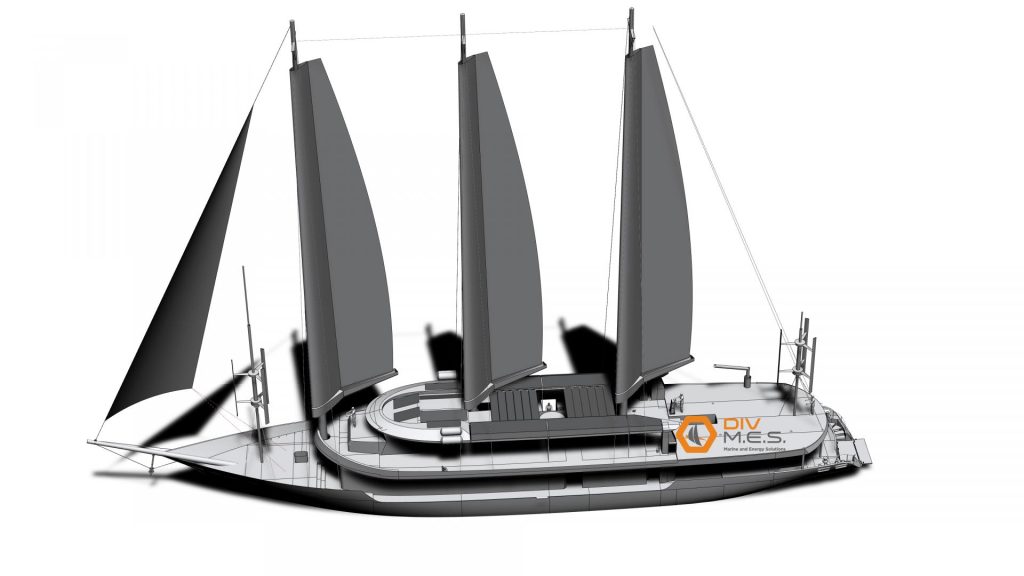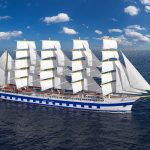Slobodna Dalmacija writes that stemming from the electric-powered river tram, an idea borne by Željko Hederić and the team from Osijek’s FERIT, the world’s largest electric-powered sailing ship with three masts should bear fruit in Split.
Brodosplit will soon begin constructing a three-masted schooner, a completely eco-friendly ship that will be powered by electric motors, while the batteries will be charged by sailing, leaving no carbon footprint in the environment.
It is even more impressive that this is a project for developing a ship propulsion system from the IRI2 program, for which the European Union has co-financed 60 percent of the value. However, those responsible have not stated the amounts in question.
The project is lead by the DIV Group, which owns the Split shipyard, and partners from the scientific research community, including FERIT and Split FESB. Work on the project began almost a year ago – last February, and will last a total of three and a half years.
“Split has already made “Klara,” a classic three-masted schooner, but they also wanted something more modern, and they wanted to improve the project. We, on the other hand, developed the “river tram” project at the faculty in Osijek, because we have the Drava. And you have the sea! Everything is based on the principle of using hydrokinetic energy,” says Hederic.
Namely, water flows through a standing turbine and converts hydropower into electricity. In the case of this ship, the sea “stands,” and the sailboat goes, pushed by the force of the wind in the sails. Of course, the screw or propeller spins, creating electricity. The professor says that in this way – from wind energy, i.e., sails as a turbine that drives the ship – you can get four to six knots of the ship’s relative speed, which gives torque to the rotation of the bolt like a generator turbine.
Thus, hydrokinetic recovery of wind energy into battery electricity.
“For example, the wind gives the ship energy for a speed of ten knots, and we reduce it to six knots and save the difference in the battery. I call it – plowing the sea. From our scientific ideas, engineers will perform a technical solution,” points out the Osijek professor.
When it is not using sails, the ship will be powered by two electric motors, each with a power of 150 kilowatts. They will be powered by a system of batteries that are continuously charged from various sources. When it reaches a sailing speed of six knots, the ship will need only 60 kilowatts of power, which is a relatively imperceptible power for a vessel of 500 gross tons, explained Brodosplit.
The ship will be equipped with 30 tons of batteries, whose capacity, figuratively speaking, is like having 60 Tesla cars. More precisely, it has a total of a maximum of 2300 kilowatt-hours, which ensures more than 50 hours of cruising exclusively on stored electricity when there is no wind.
Due to navigation safety, the ship will have two diesel units that would be turned on only if needed but will be more likely to rust from non-use, they emphasized.
What will set the Split sailing ship apart from similar vessels is that the vessel will charge its batteries when sailing but in a very ingenious way. A system of the already mentioned ship propellers with variable pitch and special wing geometry will be used, which will – for sailing – serve as a hydro turbine.
Brodosplit explains that this “reversible screw” will charge the batteries in the lower deck.
All relevant information will be collected and supervised on the bridge, or command center. From meteorological data, so that the commander knows where the wind is most favorable, to all other ship systems and propulsion, electricity supply in batteries, engine operation, solar panels, wind farms, hot water, and energy consumption.
“All “revenues” and “expenditures” of energy on the ship will be managed and controlled from one place,” said the Split shipyard.
Experts from Split FESB, led by Branko Klarin, work on the sailing system and its robotics, wind turbines, and photovoltaic panels. At the sailboat’s bow and stern, two vertical wind turbines are planned to supply the ship with electricity while in port or at anchor.
A photovoltaic solar power plant will be installed on the roof of the superstructure. Klarin’s team will address how to extract and store heat from a solar photovoltaic power plant by cooling the panels to be more efficient in producing electricity. Photovoltaic panels work most efficiently at a temperature of 20 degrees Celsius, but on their surface, on sunny days, it can be as high as 80 degrees, so excess heat can be used to heat water.
Thus, the sailboat will be supplied with electricity, heat, and water from entirely renewable sources: all the energy will be obtained without any carbon dioxide emissions.
“In short, there are no costs for fuel and power supply of propulsion machines, as well as all devices inside the ship, air conditioning, and kitchen,” concludes Hederić, emphasizing that electric drive is three times more efficient than diesel.
To read more about lifestyle in Croatia, follow TCN’s dedicated page.










